Some tools impress you with their design. Others with their speed. Manus AI aims to do both while handling tasks that usually live in separate apps like slides, spreadsheets, documents, and even bits of research. On paper, that’s ambitious. In practice, it could either be a smooth all-in-one workspace or a scattered mix of half-baked features.
I wanted a clear answer. So, I ran Manus AI through the kinds of jobs most people actually need: building presentations from scratch, creating usable spreadsheets, and producing clean, well-structured documents. What follows is a close look at what it got right, where it struggled, and whether it’s ready to earn a place in your workflow.
What is Manus AI?
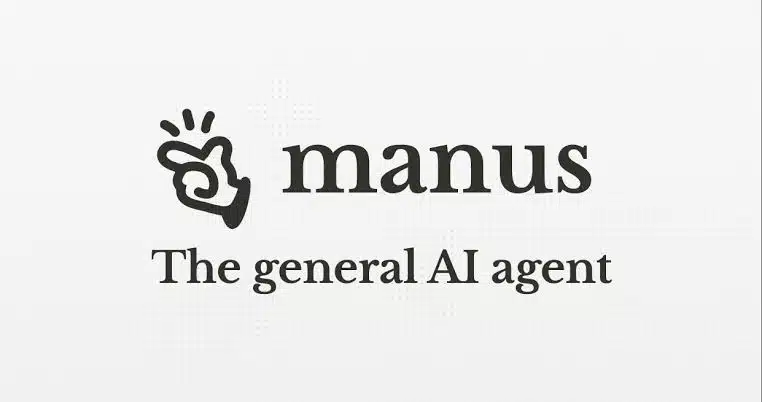
Manus AI is an autonomous AI agent designed to go beyond answering questions. It plans, executes, and delivers complete tasks. Developed by Butterfly Effect and launched in March 2025, it’s built to operate like a capable digital assistant that can work across different domains without constant human input.
Instead of giving you a single output and stopping there, Manus breaks complex requests into smaller steps, assigns them to its own “sub-agents,” and moves from planning to execution on its own. It can browse the web, analyze data, generate visuals, write and structure documents, and even create presentations or spreadsheets, all from one starting instruction.
Its core strength is versatility. One platform that can research, calculate, design, and write, while keeping results structured and consistent. For users, that means fewer apps to juggle, less time switching contexts, and a better chance of getting a polished, ready-to-use output on the first try.
Key Features at a Glance
- End-to-End Autonomy – Handles tasks from planning to final output without constant prompts.
- Multi-Format Creation – Generates slides, spreadsheets, documents, code, and visuals in a single workflow.
- Web & Data Access – Can research online, pull data, run analysis, and format results.
- Adaptive Task Management – Breaks large projects into subtasks and assigns them to specialized internal agents.
- Integrated Toolchain – Works with APIs, runs code in secure sandboxes, and pulls in external resources when needed.
- Consistent Output – Uses persistent memory to maintain structure, tone, and accuracy across different tasks.
That’s the short story. Manus isn’t just reactive, it’s operational. It aims to translate complex instructions into tangible outcomes, leaning on autonomy and integration rather than manual oversight.
Getting started
Signing up for Manus AI is fast and easy. You can get an account set up with just an email and password or even via your Google account. Once logged in, the interface feels immediately familiar, especially if you’ve used ChatGPT or other popular AI assistants. The main window is a chat-style workspace where you type your instructions. Alongside that, there’s a clean sidebar showing task history and quick links to different features.
At first glance, Manus lays out its key capabilities clearly, which are options to create presentations, build spreadsheets, draft documents, and even generate code or visuals. You don’t have to guess what it can do because it’s right there, ready to go.
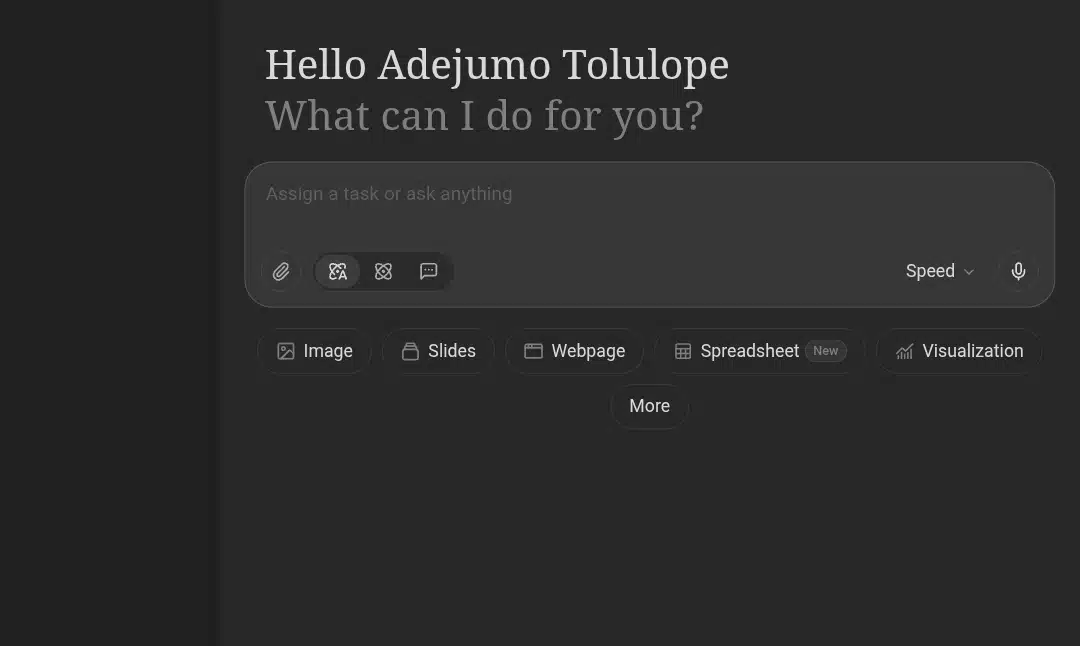
One thing worth noting is that Manus lets you test the platform with a limited free tier. You get a set number of tasks to try before hitting any paywall. If you want unlimited access or advanced features like extended memory or API integrations, that’s locked behind paid plans. But the free tier is generous enough to get a real feel for the core experience.
Plus, if you run out of credit, there’s a referral system that gives you 500 more on each person who signs up through your link.
Overall, the onboarding and interface make it easy to jump in and start experimenting fast, without feeling overwhelmed or stuck behind barriers.
Slides creation
To test Manus AI’s slide-making chops, I gave it a detailed prompt:
“Create a 7-slide presentation on how remote work affects productivity, covering key benefits, common challenges, statistics from 2023 studies, and tips for managers.”
Within moments, Manus delivered a slide deck outline, complete with titles and bullet points. The structure was logical, opening with an introduction, followed by benefits, challenges, data-backed insights, and actionable tips. The speaker notes added context but were pretty surface-level, lacking depth or fresh angles.
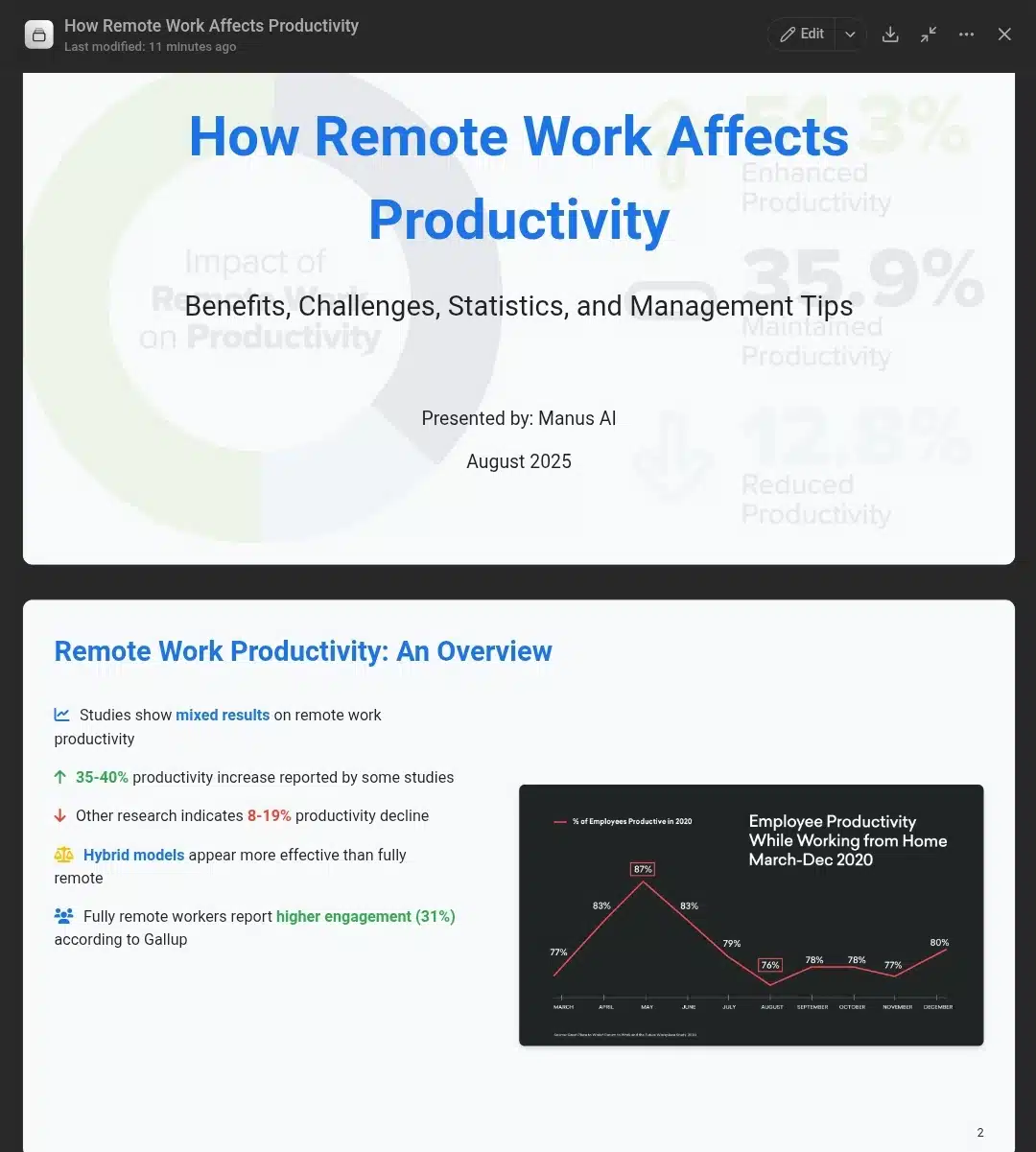
The content hit all the expected points but didn’t surprise. For instance, benefits focused on flexibility and work-life balance, while challenges circled back to isolation and communication gaps, nothing outside the usual talking points.
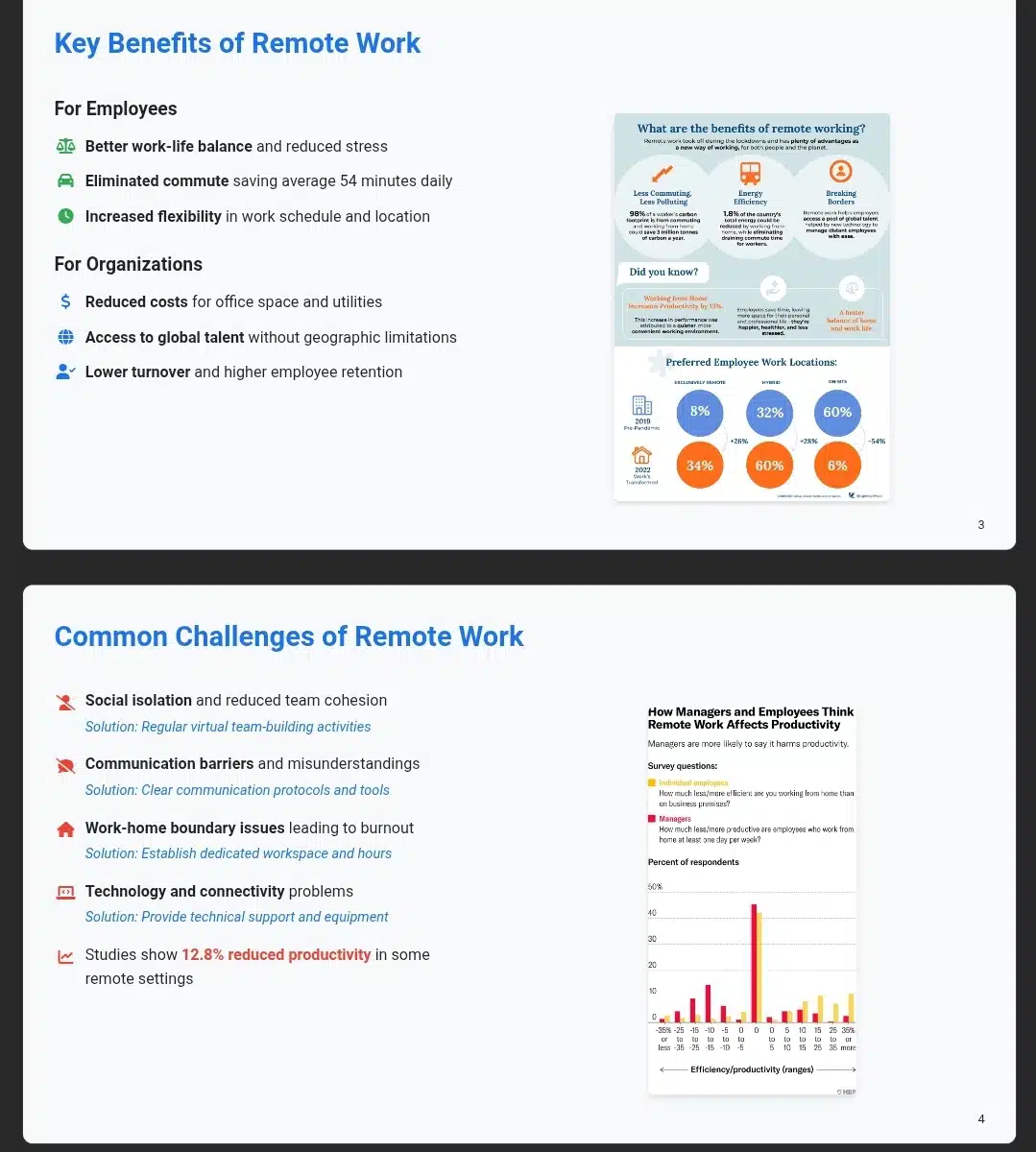
The generated slides leaned heavily on text, with only basic charts that looked generic. There was no option to select a theme or adjust visual style beyond rearranging bullet points. That said, for a fast first draft, it worked well.
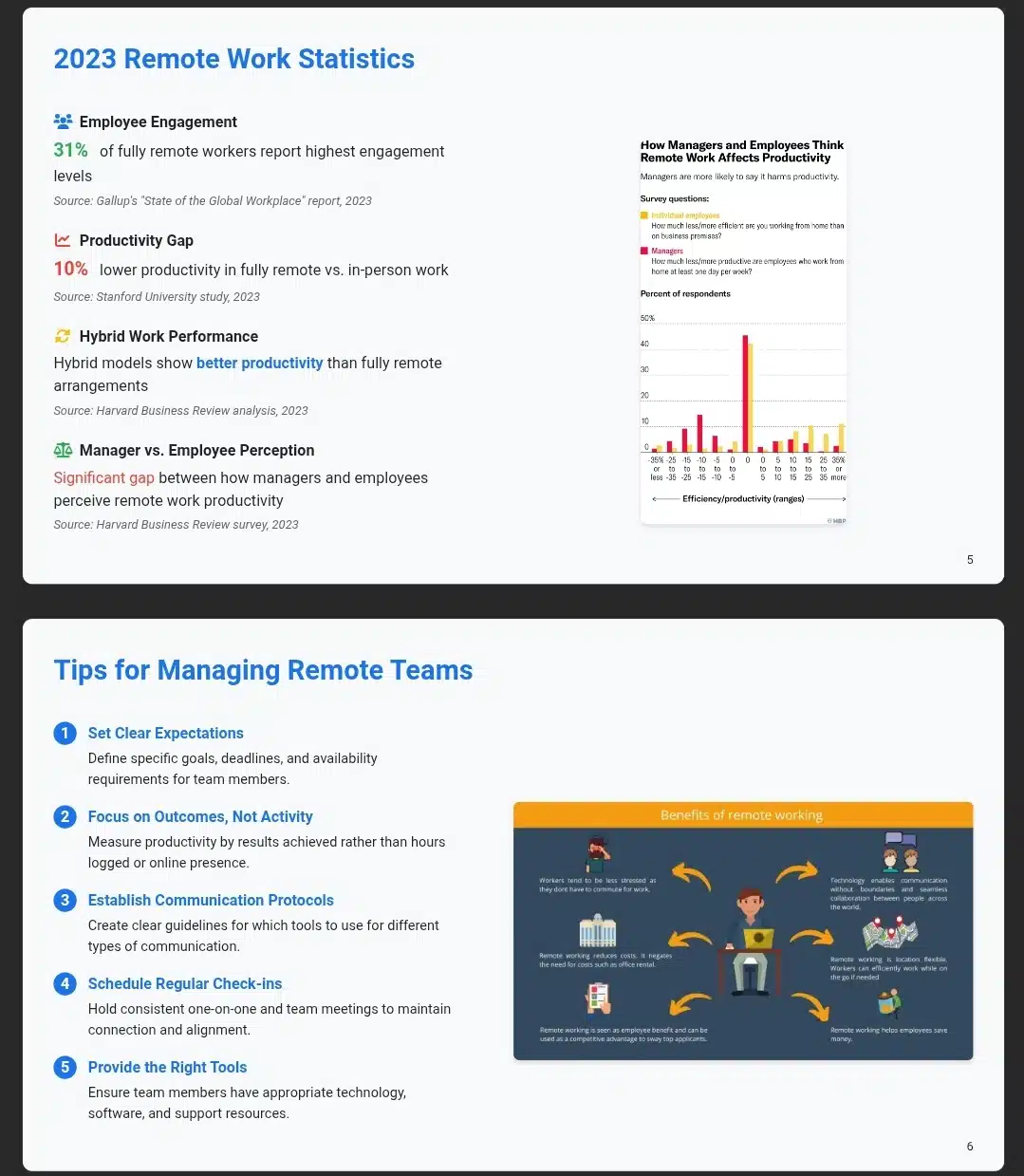
When I asked Manus to expand on one slide, say, the statistics section, the added detail was accurate but mostly pulled from generic public data. It didn’t link to sources or provide nuanced analysis.
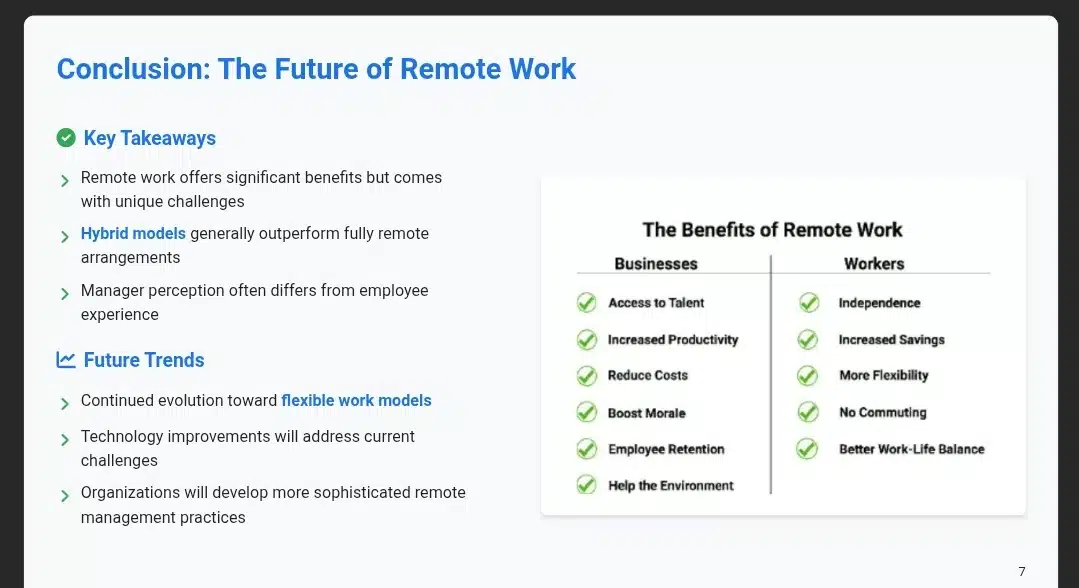
Overall, Manus AI nails the skeleton of a presentation, making it a good starting point. But anyone expecting polished design or in-depth, original content will still need to add significant polish.
Spreadsheets & Data Tools
For the spreadsheet test, I gave Manus a real-world scenario:
“Create a monthly budget spreadsheet with categories for income, fixed expenses, variable expenses, and a summary showing total income, total expenses, and balance.”
Manus generated a functional spreadsheet with labeled columns and rows, formulas correctly calculating totals, and a summary section at the bottom. The formulas worked as expected when I tweaked numbers, showing the tool’s basic math logic was solid. Although initially, there was no value.
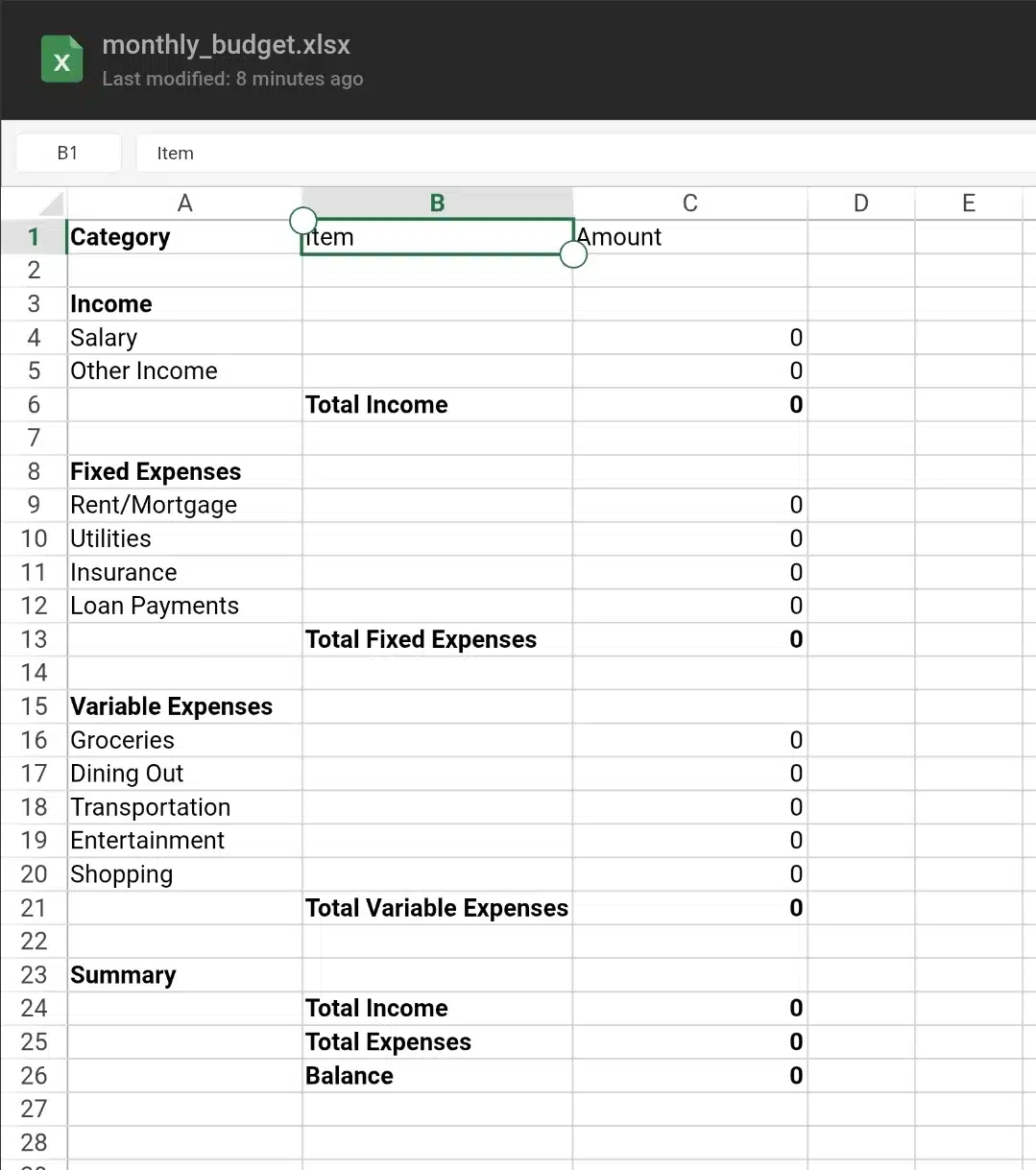
The layout was clean but minimal, lacking color coding or conditional formatting that would help quickly spot overspending or trends. It didn’t suggest charts or visual breakdowns unless I specifically asked.
When I requested it to add a “savings goal” tracker with a progress bar, Manus produced a simple percentage calculation, but no visual progress bar, just text indicating the percentage saved. That felt like a missed opportunity for intuitive design.
One odd quirk is that when I asked Manus to insert a formula for “average monthly spending,” it gave me a correct formula but placed it in an unexpected cell that wasn’t part of the main summary, forcing manual adjustment.
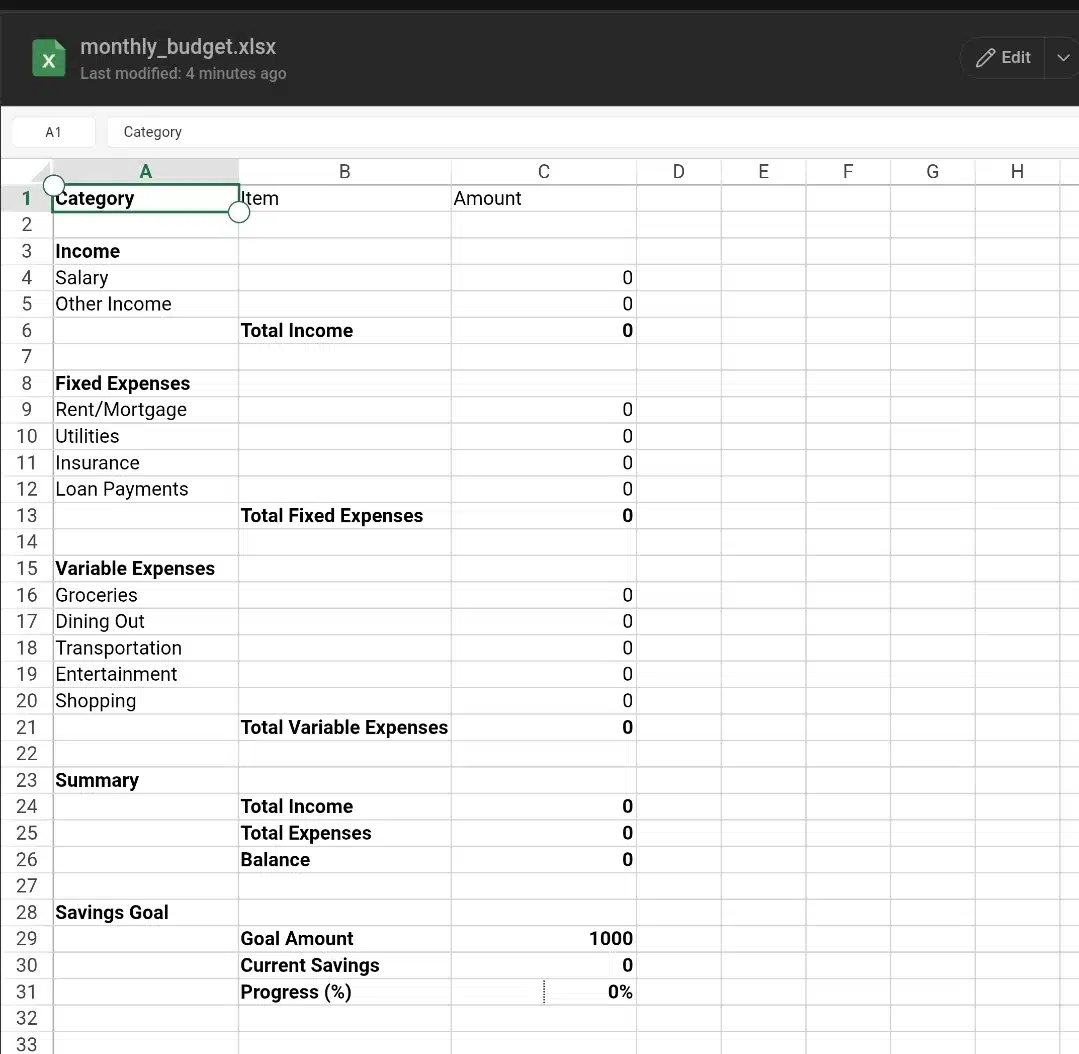
Overall, Manus AI handled the spreadsheet basics well, delivering a usable document fast. However, it’s not yet a replacement for a power user who relies on advanced formatting, visuals, and dynamic dashboards.
Text & document creation
To test Manus AI’s writing chops, I gave it this prompt:
“Write a 500-word article on the benefits of remote work for employee well-being. Use a professional but approachable tone, with a clear structure including an introduction, body, and conclusion.”
Manus quickly generated a coherent draft covering expected points: improved work-life balance, reduced commuting stress, and increased autonomy. The structure was clear, intro, body, conclusion, and transitions between sections were smooth enough to read without jarring shifts.
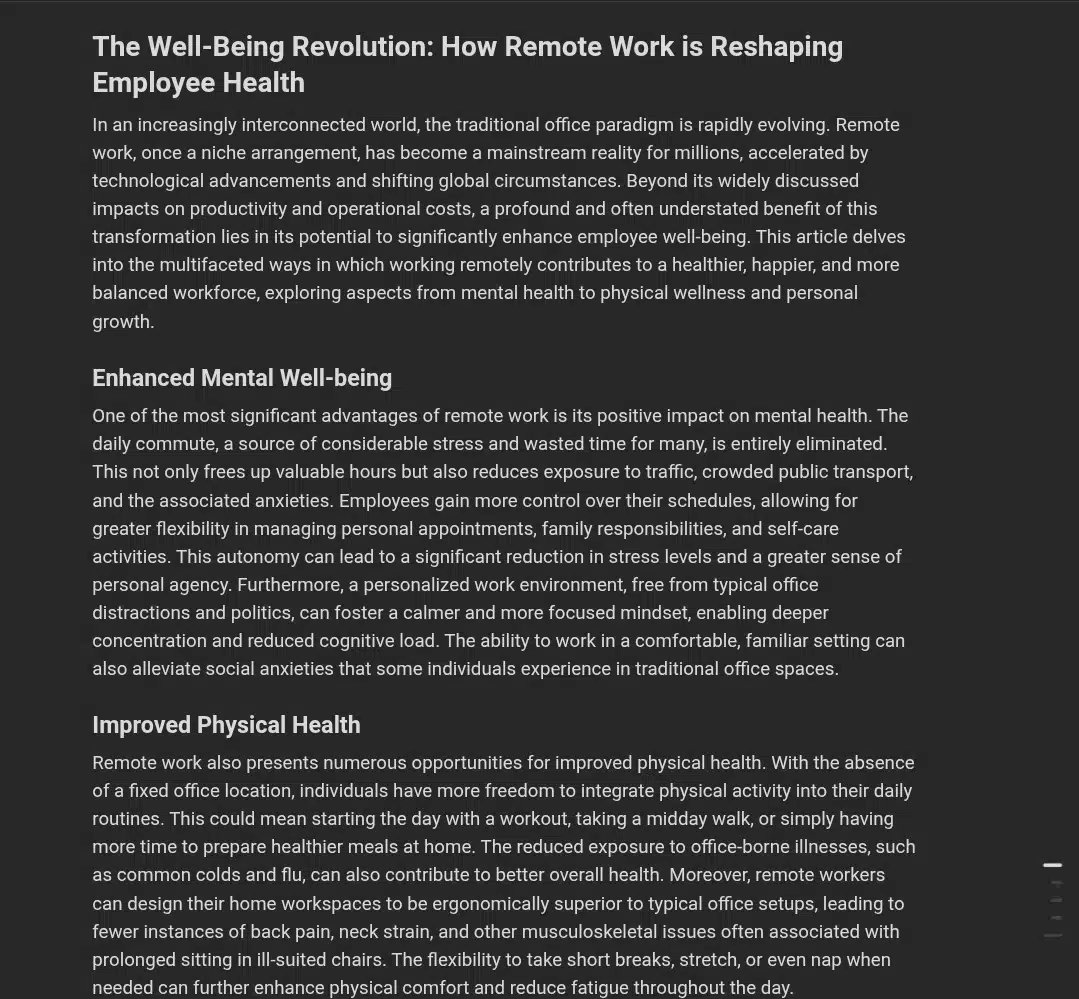
That said, the content stayed surface-level. The article didn’t dig into fresh insights or recent studies, and the phrasing occasionally felt generic and repetitive. For example, phrases like “flexibility leads to better productivity” appeared multiple times without variation.
Formatting was simple with no subheadings, bullet points, or callouts, so it felt more like a rough draft than a finished piece. I had to manually add those to improve scannability.
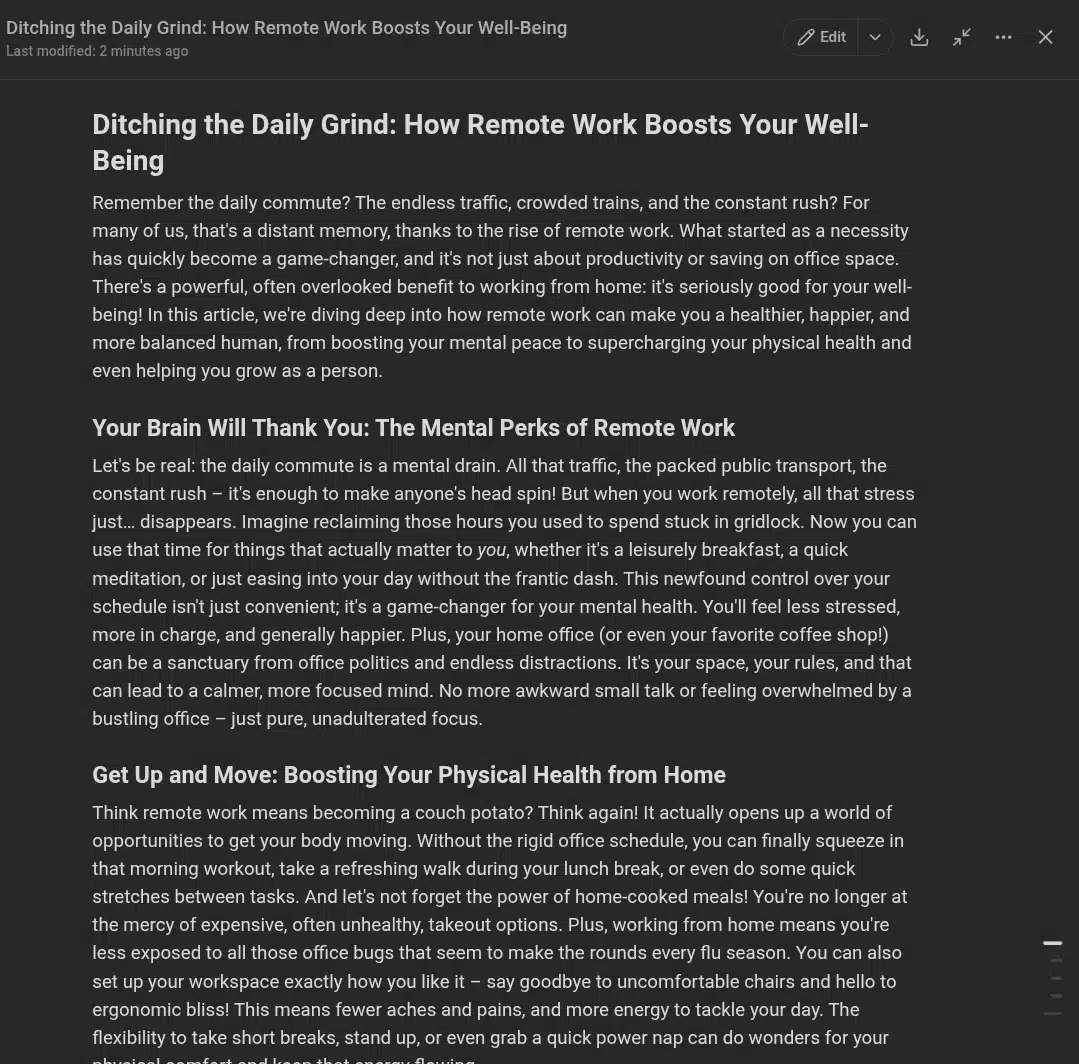
When I requested a rewrite to make the tone more conversational and add examples, Manus complied but introduced some awkward phrasing and minor inconsistencies in style.
In summary, Manus AI can produce a solid base draft quickly, but it’s clear the user will need to invest time refining for depth, originality, and polish.
Other features tested
Beyond slides, spreadsheets, and text, I put Manus AI through some of its other claims: generating quick email drafts, creating simple charts, and running code snippets.
For email drafts, I asked:
“Write a polite follow-up email requesting a status update on a pending project.”
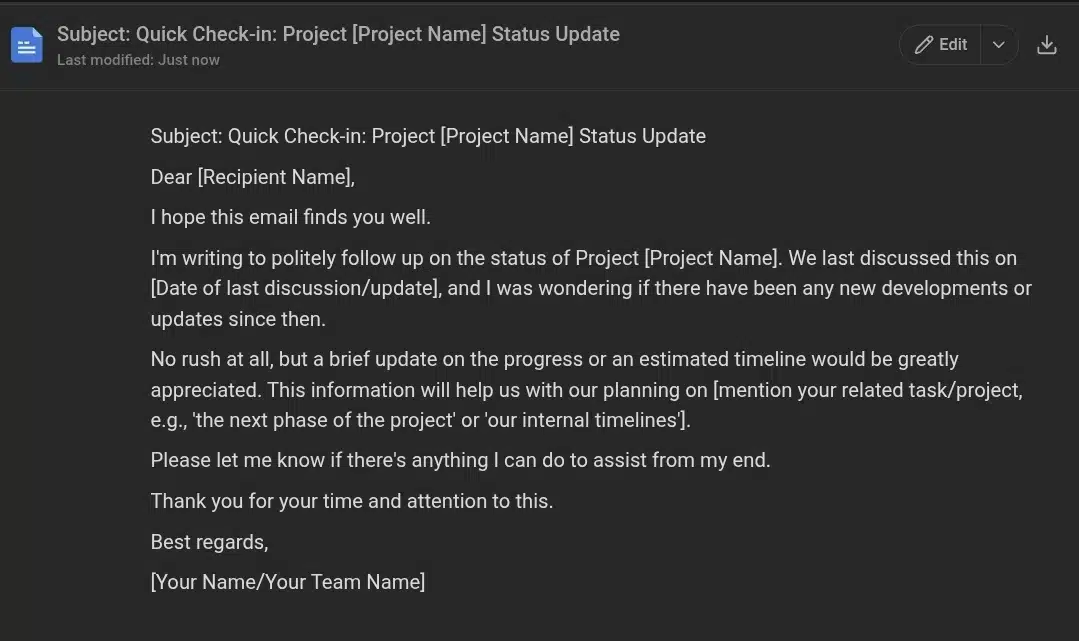
Manus produced a concise, professional email with appropriate tone and structure. It required minimal editing, making this a solid timesaver for routine communication.
Next, I tested chart creation by requesting:
“Create a bar chart showing quarterly sales for 2023 with data points: Q1 – $50k, Q2 – $65k, Q3 – $70k, Q4 – $80k.”
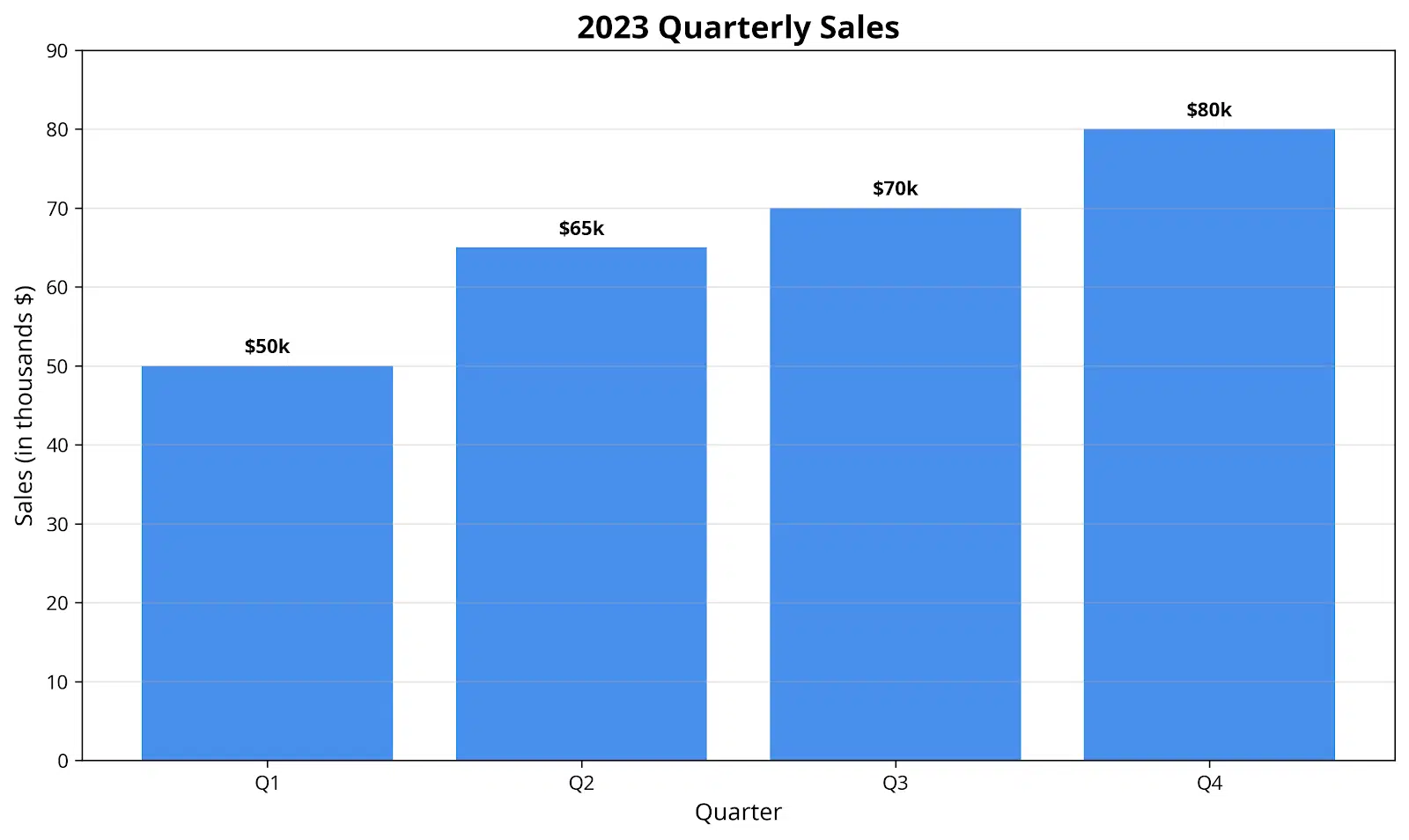
Manus generated a basic bar chart embedded within the response. The visual was clear but lacked customization options like color choices or labels placement.
For code, I tried:
“Write a Python function that takes a list of numbers and returns their average.”
Using Manus AI day-to-day feels straightforward but with a few quirks. The interface’s similarity to ChatGPT means you won’t waste time learning new navigation patterns, which helps you dive straight into work.
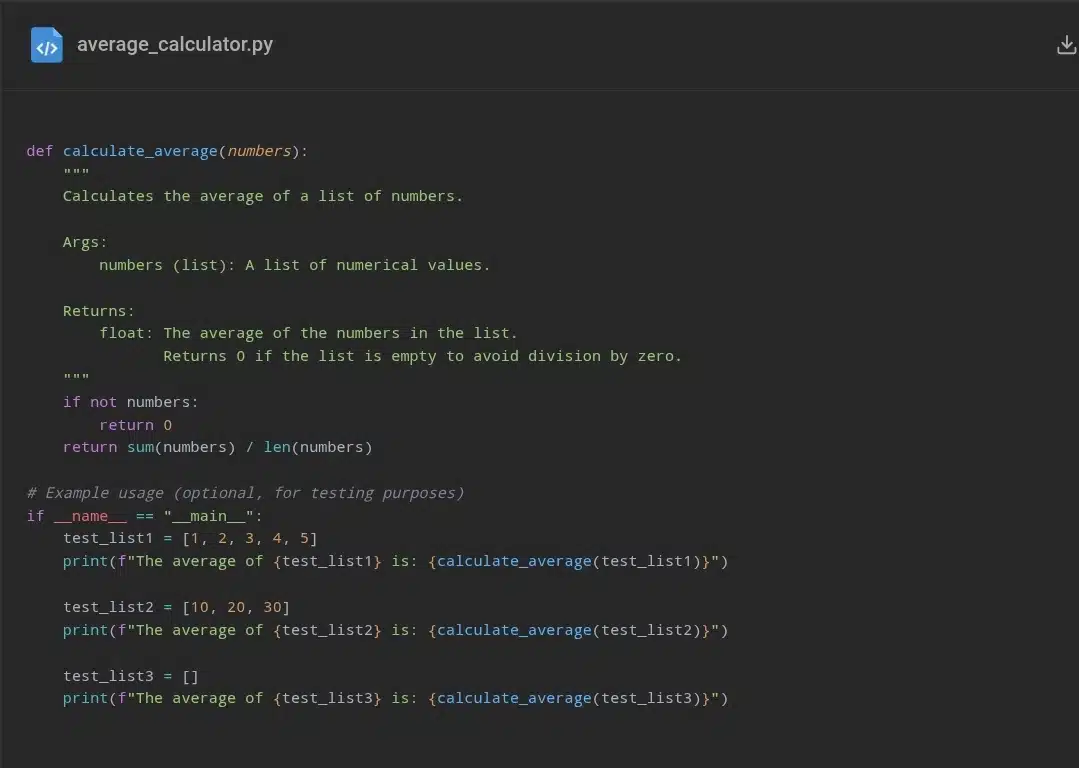
Manus returned a clean, well-commented function that worked correctly when I tested it in a separate environment. This shows promise for quick coding tasks or a learning aid.
However, the tool’s current scope for these extra features feels limited. There’s no integrated environment to edit or debug code, and charts are static images rather than interactive elements.
User experience
The platform is responsive, with most tasks completing quickly. I rarely waited more than a few seconds for outputs, even on more complex requests. The chat-based workspace encourages a natural back-and-forth, letting you clarify or expand tasks midstream without losing context.
That context retention is a standout. Manus remembers previous instructions and details throughout a session, so you don’t have to keep repeating yourself. This makes longer, multi-step projects feel more like a conversation and less like issuing isolated commands.
Where the experience falters is in the lack of deep customization. Options for tailoring outputs, especially in slides and visuals, are limited. Also, while the interface is clean, power users might miss shortcuts or batch processing capabilities that boost efficiency.
Overall, Manus AI strikes a good balance for casual users who want fast, reliable results without steep learning curves. For heavy, nuanced workflows, it still feels a bit basic.
Performance & accuracy
Across different tasks, Manus AI showed consistent speed and reliability. Slide decks, spreadsheets, and documents were usually generated within seconds to under a minute, depending on complexity.
Accuracy in basic calculations and data organization was solid. Formulas in spreadsheets worked correctly, and textual content was free from glaring errors or nonsense. That said, the AI sometimes defaulted to generic phrasing or repeated common knowledge rather than delivering fresh insights or nuanced analysis.
The biggest challenge came with more complex or creative demands. For example, when asked to expand on statistics or produce richer slide visuals, the outputs felt safe but uninspired. Also, the positioning of formulas or layout details sometimes required manual adjustment after generation, suggesting the AI isn’t yet fully attuned to presentation nuances.
No major bugs or crashes were encountered during testing, which speaks well to Manus’s stability. However, occasional quirks in output formatting mean users should plan on some cleanup, especially for client-ready work.
Limitations & areas for improvement
While Manus AI shows promise, it’s clear the tool isn’t without its rough edges.
First, design and visual customization options are minimal. The slide decks lean heavily on basic layouts and simple charts, lacking the polish or branding flexibility many users expect. Without more templates or styling controls, users will need to export and tweak presentations elsewhere.
Second, the depth of content can feel surface-level. Whether in documents or speaker notes, Manus tends to stick to common knowledge and general phrasing. It doesn’t yet deliver original insights or dive into detailed analysis, which limits its usefulness for more expert-level tasks.
Third, some workflow quirks interrupt flow, like formulas landing in unexpected spreadsheet cells or a lack of integrated code editing. These glitches mean manual fixes and reduce the tool’s efficiency for power users.
Lastly, the paid tier unlocks important features like unlimited tasks and extended memory. For frequent or complex users, the free version will quickly feel restrictive, which is worth factoring in when considering long-term value.
Pricing & Value
Manus AI offers a straightforward pricing structure designed to accommodate casual users and professionals alike.
- Free Plan: Allows around 10 to 15 tasks per month, covering core features like slide creation, spreadsheet generation, and document drafting. This tier gives enough room to explore the platform’s capabilities but comes with limits on task volume and memory duration.
- Basic Plan: Starts at $16 per month, offering increased task limits and access to more features suitable for regular users.
- Plus Plan: Priced at $33 per month, this tier provides higher usage caps, extended memory, and priority support.
- Pro Plan: At $133 per month, this plan unlocks the full suite of features, including unlimited tasks, API integrations, and advanced customization options.
- Team Plan: Tailored for organizations; pricing is custom and requires contacting sales for a quote.
This tiered approach strikes a balance. The free plan is generous enough for occasional use and testing, while the paid plans make sense for users who want to rely on Manus AI for consistent, complex workflows.
Verdict
Manus AI isn’t just another AI that spits out text or numbers. It’s trying to be a full-fledged digital coworker, blending task management, content creation, and data handling into one space. That ambition shows in moments when it keeps track of context across multiple steps, making complex projects feel less like a hassle.
But that breadth comes with trade-offs. Depth and polish are where it stumbles, slides lean on basic templates, documents skim the surface, and spreadsheets don’t yet offer the nuance power users expect. It’s a strong starter platform, but it demands that you bring your own expertise to elevate the raw output.
What stood out most to me was how Manus can reduce the friction of juggling different tools. For anyone tired of switching between five apps to get one project done, it’s a genuine time-saver. Yet, if you need highly specialized or polished work, Manus will only take you part of the way.
In short, Manus AI is best viewed as a foundation, a reliable assistant that can handle routine, multi-format tasks efficiently, but one that still relies on human judgment and refinement to work well.
Wrapping up
Manus AI offers a compelling promise: one platform to handle slides, spreadsheets, documents, and more with minimal fuss. After testing it hands-on, I found it delivers on that promise for everyday tasks, cutting down the time and mental load of bouncing between tools.
It’s not flawless, its depth and design options need work, and power users might find it limiting. But for anyone looking to streamline routine workflows without juggling a dozen apps, Manus AI is worth a serious look.
If you want an autonomous assistant that handles the basics well and grows with your input, Manus AI might be the tool to watch.
You may also like :
| chatGPT vs Claude for coding | chatGPT vs Perplexity AI: 10 use cases |
| Grok 3 vs ChatGPT: 10 prompts | Meta AI vs ChatGPT |
| Bing AI vs ChatGPT | Deepseek AI review |










